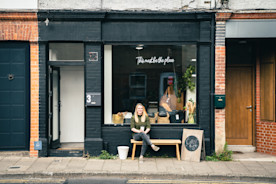We live in the age of the empowered customer. Constant and rapid technological evolution has changed the way we shop and dine. Smartphones are embedded in our lives, giving us information from anywhere, any time. Customers want things faster than you could have imagined even just 5 years ago.
As technology evolves — and expectations with it — traditional retail and restaurant models have come under pressure to adapt. The way people use their local high street is changing. But rather than simply threatening the existence of businesses, it’s creating a demand for them to rethink their approach to attracting and retaining customers. Here’s how you can do the same.
Reimagine the in-store experience
From big brands to tiny boutiques, the in-store experience is being designed for the needs of the customer. One way you can do the same is to use your physical space as more of a showroom — a place for customers to experience your brand in an intimate way, rather than just as a stop on their shopping trip. Busy layouts that overwhelm the customer are solved through curation, helping them browse in comfort, try and test at their own pace and even encouraging them to buy online at a later date.This is an approach that particularly works for pop-up shops, a new regular on the high-street scene in Ireland.
Another way is to remodel the way you take payments around the customer themselves. For example, a fixed cash till that jars with its surroundings and creates an awkward queue can be replaced with pocket-size card readers that can be taken out onto the shop floor.
Make the eCommerce experience seamless
Successful businesses have also made sure customers can buy products any way, both in-store or online, by building beautiful, easy-to-navigate eCommerce sites and intuitive mobile apps that simplify transactions. Their catalogues can be browsed on any device, and their online returns policies are built around their customers’ needs.
Communicate in new ways
Chatbots can now be used to relieve the burden of functional customer service queries, whether through dedicated apps like Intercom, or more familiar social media platforms like Facebook Messenger. This frees up time for your staff to have those complex interactions that demand more knowledge and emotion. And whilst review sites remain popular, digital receipts allow you to have one-on-one conversations with customers in private after they leave your store.
There are no limits to what you can do to create customer-focused experiences. And as the high street changes, now is the time to start thinking about what suits your business and your customers’ needs best.

